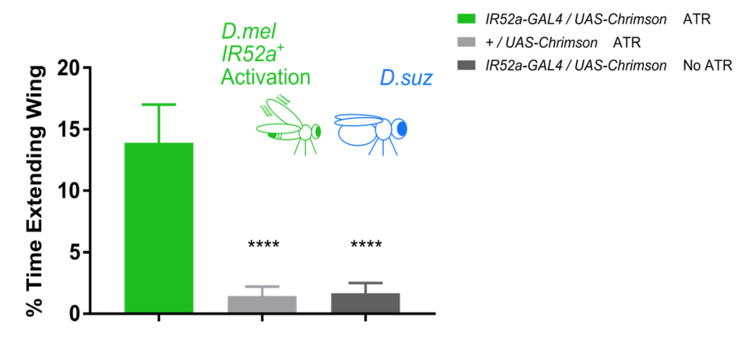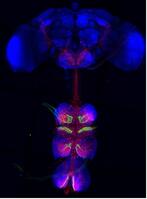One of the most ancient and fundamental problems in biology is the recognition of suitable mating partners. We found that: i) members of a cluster of ionotropic receptor genes in Drosophila have roles in mating behavior; ii) some of the neurons in which they are expressed are activated by exposure to members of the same species, but not a related species; iii) activation of some of these neurons drives males over the species barrier to show sexual behavior toward a distantly related species; iv) activation drives females to mate. We are now studying how these receptors, neurons and circuits underlie mate recognition.

Optogenetic activation of IR52a neurons drives male sexual behavior toward females of another species

Trans-Tango circuit mapping of IR52a neurons
References
He, Z., Luo, Y., Shang, X., Sun, J.S., and Carlson, J.R., (2019) Chemosensory sensilla of the Drosophila wing express a candidate ionotropic pheromone receptor, PLoS Biology, 17(5), e2006619
Koh, T.-W., He, Z., Gorur-Shandilya, S., Menuz, K. Larter, K., Stewart, S. and Carlson, J. (2014), The Drosophila IR20a clade of Ionotropic Receptors are candidate taste and pheromone receptors Neuron 83, 850-865.